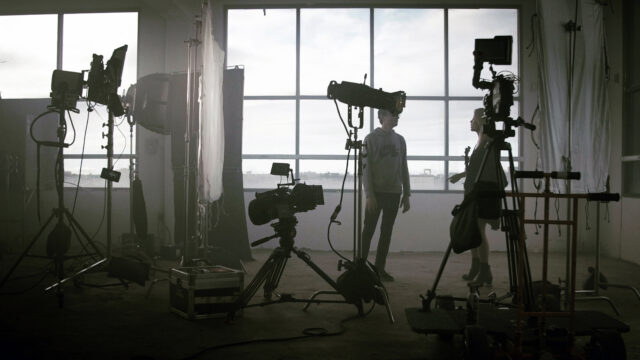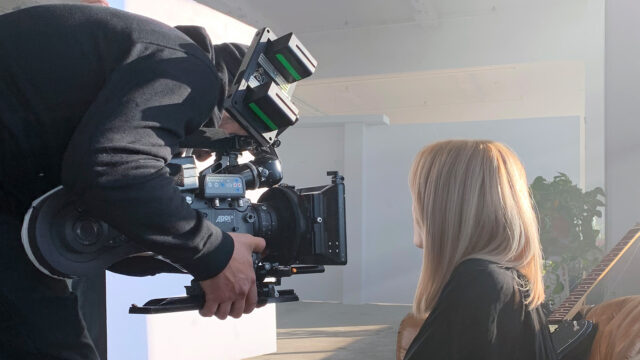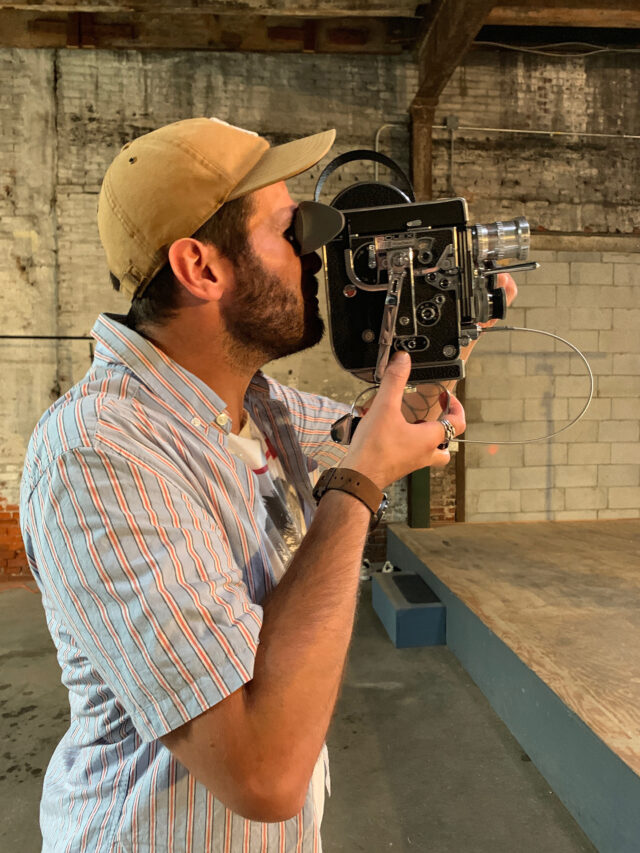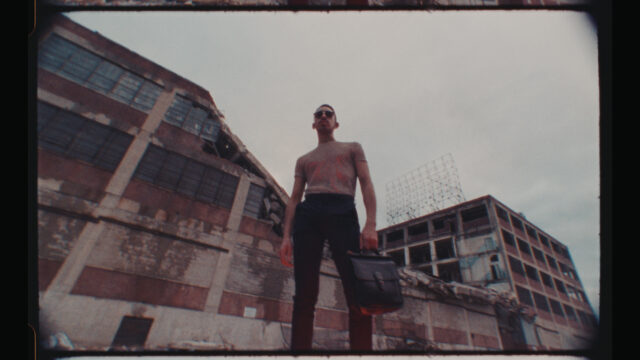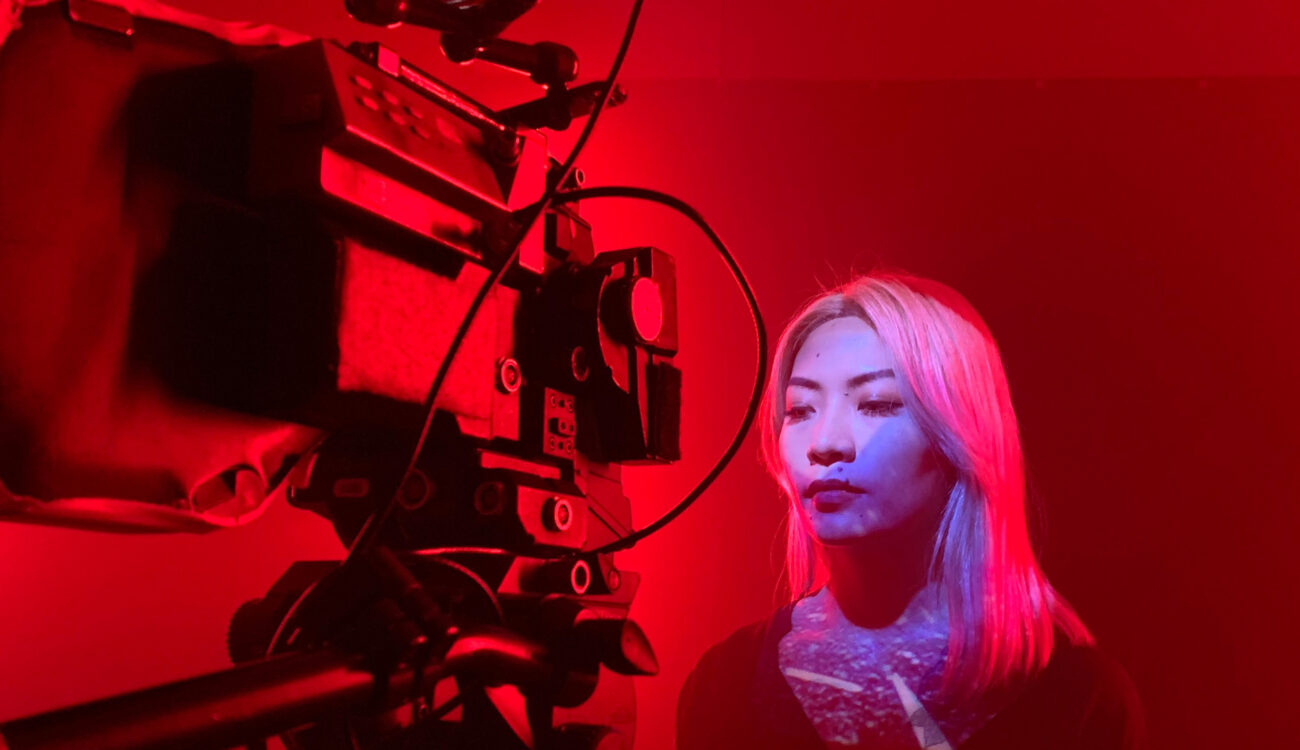
Motion picture film is anything but dead. These three filmmakers want to prove that shooting film is accessible to anyone who wants to use it.
When filmmaker Shane Scherholz reached out about some upcoming film projects actually shooting on film, I couldn’t resist finding out a bit more. Shane is part of a small production collective including D.P. Josh Echevarria and Derick Crucius, all passionate about shooting film. These three filmmakers have been working together for more than six years. I jumped at the chance to ask them about their experiences, plans and to share how (and why) they choose to shoot film even on limited budgets. We share some BTS of an upcoming music video, unfortunately the actual music video itself hasn’t been released by the record label yet.
Why Shoot Film?
This is the biggest question on the mind of any filmmaker. For Shane, Josh and Derick, it comes down to the kind of productions they are usually shooting and the result they are looking for. For many music videos, and the visual style this trio are becoming known for, the intrinsic look of super 8mm and 16mm lends itself to the themes of the stories being told. For a music video, it really comes down to the song, and it may even be mixed with some parts shot on film, and others digitally.
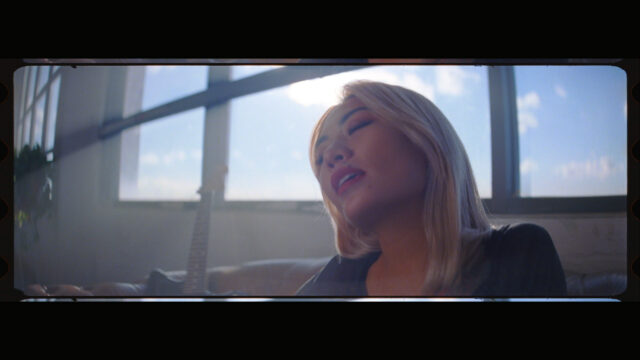
A desqueeezed anamorphic 35mm film frame from the “Frames – Hell” music video. Image credit: Shane Scherholz
Of course there are ways to emulate the super 8, and super 16mm look in post, but shooting the real thing is the fastest and most surefire way to nail the look. Refreshingly, you’ll hear none of the typical film vs digital arguments from these three. The main concern that determines the capture medium is the story itself.
When three young filmmakers with no ties to the pre-digital era start out learning digital video, and then decide to explore film, the result is a clear head and decisions that are not clouded by nostalgia. For Shane, Josh and Derick, film is another tool, a different canvas on which to paint.
This is why many believe that film as an artistic photographic medium now has a solid foundation under it compared to its decline that started 20 years ago.
Costs
The next biggest question to be asked by any digital-first filmmaker with a curiosity to explore film, is cost. After all, technology and the evolution of capturing a better image aside, one of the biggest factors to shift production from film to digital in the 2000’s was simply cost. The cost of equipment, and rental, of crew and the number of crew required in a typical camera team, the cost of raw film stock, processing, and telecine or scanning all adds up to a point where it’s very difficult to justify not shooting digitally.
While this hasn’t changed, and it’s still true today of 35mm, Shane, Josh and Derick were adamant to point out there are cost effective ways to approach super 16mm, and definitely super 8mm. One of the ways is not to shoot an entire music video on film, but to shoot certain sequences in a project. The A-camera may be digital, and B-camera may be film. Even if an entire project will be shot on film, it’s important to shoot as sparingly as possible. This might involve being conservative with coverage, and not letting the camera roll too long before and after takes.
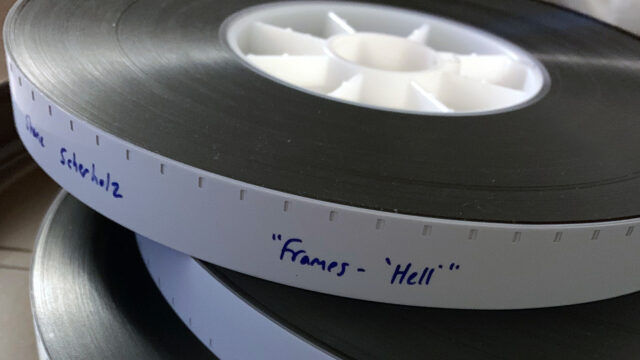
Processed reels of super 16mm film for the “Frames – Hell” music video. Image credit: Shane Scherholz
Shooting for the edit is another concept we discussed at length. This doesn’t necessarily mean storyboarding and listing every shot, but knowing what the edited video will look like, and what shots are required can minimize wasting film that will never make the final cut. This is possible by getting as many usable shots on a 50ft roll of super 8mm (3.5 mins at 18fps), or a 400ft roll of super 16mm (11.6 mins at 24fps) as possible. This also comes with experience, and with developing a style that is repeatable, and which clients recognize, and employ you for. This is the approach being taken by these three filmmaking friends, who plan to start a more formal production company this year, although the events of 2020 have delayed these plans.
More than with digital filmmaking, there tends to be a tighter community around those shooting film, and this extends not only between filmmakers, but also to the labs that service them. Large established, and smaller boutique film labs with full service facilities seem to be popping up again after many went out of business more than a decade ago. The labs are dependent on these filmmakers, and so it’s in their interest to be as supportive as possible. Having a good working relationship with a lab is one way to save costs. The better you know a lab personally, the more chance there is to negotiate pricing and deals on a project by project basis.
Equipment
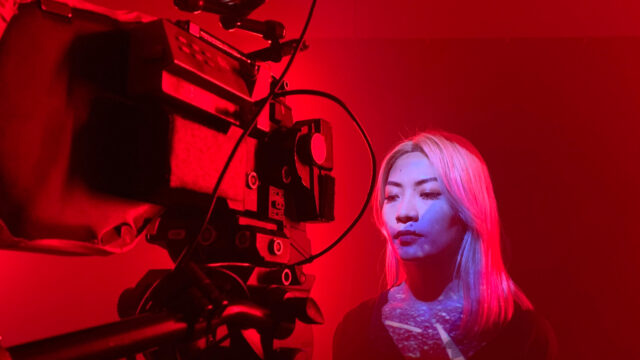
A BTS photo from “Frames – Hell” music video, which was captured on 16mm and 35mm anamorphic, and scanned to 2K resolution for post. Image credit: Shane Scherholz
Once you get your head around why you might want to shoot film, and that if you shoot sparingly, and deliberately you can control the costs, next up is looking at camera gear. Unlike used film photography gear, it’s possible to pick up a good super 8mm camera relatively cheaply. You’ll pay a bit more if you want to shoot 16mm, but camera gear is available at a fraction of what it cost new, or used when it was in demand.
It’s important to know where to look, and also places to avoid. One key point that Josh and Derick brought up again and again is the importance of plugging into the local and regional analog filmmaking community.
There has been a clear rise in interest over the past five years of filmmakers (and photographers… but that’s a different story) shooting film, as we’ve seen with Kodak strengthening its position and bringing back new motion picture film stocks (releasing Ektachrome E100 color reversal for super 8mm and 16mm specifically), and ramping up production across their range of motion picture products. In part this is in reaction to increased demand, but it is also driving demand as well, especially in the case of super 8mm.
This has created active communities of filmmakers across different cities, and different regions, and countries, that are keen to share knowledge and resources with each other. This is one of the best ways to find quality equipment. You should look out for online forums, which may be on facebook or reddit, where filmmakers share and collaborate. Many times this can result in finding better camera equipment that you know has been maintained and looked after compared to buying blindly on ebay at inflated prices.
Josh bought a Aaton XTR 16mm sync camera, and also has a 35mm ARRIFLEX 235, which is motor only sync (MOS), for a fraction of what this equipment cost new, and this is the basis for much of their work.
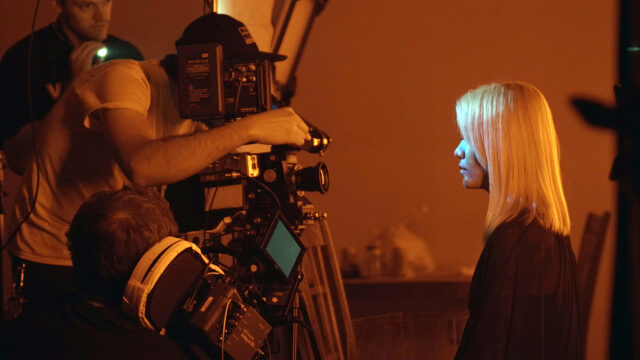
Planning and careful camera setup before rolling go into not wasting film. Image credit: Shane Scherholz
Planning
I was surprised to learn that Shane, Josh and Derick don’t spend too much time planning every take of every shot down to the finite detail. More than storyboards and detailed lists, they shoot what they know they will need in the cut. However, other factors require planning for a film shoot compared to digital. Loading and unloading camera mags takes some time, and needs to be done carefully, marking every exposed roll. This requires a changing tent or bag and careful practice beforehand to learn how to load a mag by feel alone. Loading a super 8 cartridge is of course a lot simpler and faster but keeping track of exposed film and marking it correctly is the key to knowing what’s been shot on which rolls of film.
As I mentioned previously, only parts of a project may be shot on film. So they will create some rough shot lists to help guide what is A-camera (digital) and what is B-camera (film). Shooting film requires more patience and discipline on location.
Post
When it comes to post production, once the film negatives have been scanned, the process is exactly the same as with digital. The lab takes care of scanning film to 4K ProRes, and these files then join the digitally captured clips in the edit. The film shots will need to be corrected a bit differently to the shots from digital cameras but in the end the same principles in color correction apply, and everything is matched up.
We joked about whether the guys intended to start cutting by hand on a Steenbeck, but decided that the evolution of technology is good thing. Even though film is enjoying a revival for image capture, there are some things that we’ve got so much better now. Having to rush (the origin of the term “rushes”) exposed film from location to the lab to be processed overnight, create color timed dailies prints, which are only viewed the next day. The whole traditional film post process involves syncing sound, and creating multiple generations of contact prints at various points throughout the whole process. It’s an inefficient and wasteful process we can safely leave in the past.
Experimental Processes
One interesting and fun aspect of shooting film is the very fact that it’s photochemical, and the results can be influenced in unexpected ways by so many different parts of the process. If you shoot by the book, motion picture film is very stable, producing consistent and accurate results every time. However, if you start to change how you shoot, or how you develop the film, you can create some incredible effects.
Above is one of Derick’s hand processed experimental films. Hand developing motion picture film is one way that some filmmakers purposely add some instability to an otherwise highly controlled, lab perfected process. Derick has explored hand developing a number of films with some interesting and rich results. Hand developing is almost exclusively done with black and white film stocks, as the chemistry and control involved is much simpler than for color negative films. There are even alternative chemistries for processing such as Caffeinol, a developer made from instant coffee, vitamin C powder and washing soda. It is only suitable for black and white films, and is slow to act, so requires longer developing times. It’s still not exactly environmentally friendly, as silver deposits still collect in the developer and fixer. Any home developing method will require you to research the best way to dispose of your chemicals as the methyl chloroform, ammonia, and formaldehyde present in traditional developer can damage surfaces and shouldn’t be poured down the drain. Unfortunately, there’s no way of getting around the heavy metals involved in the chemistry of photography, even if they are only trace amounts. Checking with a local lab who can dispose of your chemicals properly is the best approach.
A conventional developing process at a lab can also change certain parts of the process to destabilize or alter the results, such as bleach bypass, and cross processing, where you develop color negative film in chemistry intended for color positive film, or vice versa. All of these processes alter the look of the film in significant ways.
What’s Stopping You?
Shooting film is nowhere close to how complex, and inefficient as it used to be. In the digital era it’s just another capture medium. Once developed and scanned, it merges directly into your existing digital workflow. While the chemistry involved in both the production and development of film is not environmentally friendly, the process is incredibly streamlined and less wasteful than it used to be. There is only one generation necessary now. You only have to expose camera negative and develop it once. There are no more dailies prints, and married sync prints, or any intermediate inter-negatives or other contact prints made and developed throughout the post process, not to mention prints made for theatrical projection. All of these traditional processes in post and delivery required more film, more chemistry and more waste.
It’s true that a super 8 cartridge or a 100ft roll of 16mm film is not cheap, and only affords a few minutes to be captured per roll. However, if you know what you need for the edit, 3 minutes is plenty to capture those shots. The process is different, and a lot of fun. Seeing your scans come back and playing them for the first time is an addictive experience.
Super 8 is a great way to get started as quality cameras are available and affordable, and the cost of a few cartridges plus developing is far less than 16mm.
Have you shot film in the past? Are you interested in making film part of your image capture process for personal or commercial projects? Let us know what you think in the comments below.
